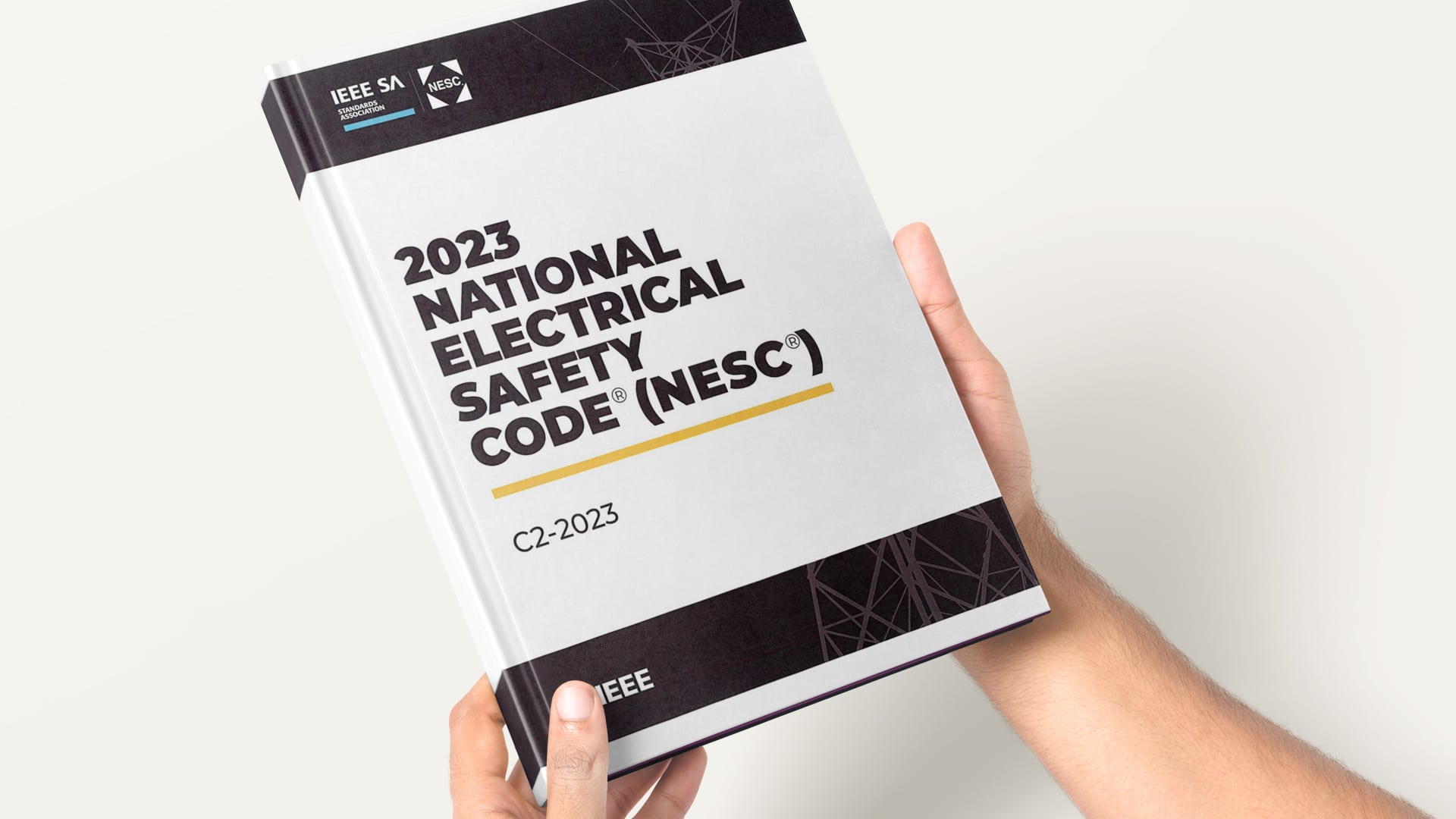The PoleOS™ Company

Class objectives
- Understand the organization, scope, purpose, and general application of the NESC.
- Apply the NESC to common situations found on overhead and underground distribution, transmission, and communication lines and in substations.
- Recognize how the Code is integrated into design and construction standards and operating practices.
- Identify and take action to correct Code violations and safety hazards.
- Design and build facilities that comply with Code requirements.
- Understand the actions needed to work safely.
- On day 2 (optional), interact with class attendees, participate in Code discussions, and understand how to independently find rules in the Codebook, as well as apply them to actual field construction situations.

Who should attend?
Prior working knowledge of the NESC is not required. This class is designed for:
- Engineers
- Staking Technicians
- Power Lineworker
- Safety Personnel
- Inspectors
1-Day Class
0.6
Continuing Education Units (CEUs)
6
Professional Development Hours (PDHs)
1.2
Continuing Education Units (CEUs)
12
Professional Development Hours (PDHs)
This class has not been registered with any State Licensing or Education Board..

Led by our expert instructor
Grant D. Glaus, P.E. NESC and OSHA Training Instructor, at ikeGPSGrant Glaus is a registered professional electrical engineer with more than 25 years of experience in Electric Utility Engineering, NESC, and OSHA training, and is now leading IKE's training programs. Grant brings vast knowledge and extensive background, including his role on the NESC Main Committee and on Subcommittee 5 Overhead Lines-Strengths and Loading, and 15 years of experience supervising and managing the engineering department at Columbia Rural Electric Association. Before that, Grant worked with David Marne for ten years, providing consulting and NESC and OSHA training services.
Hear what attendees are saying
Valuable those new to the NESC.
The general overview of the NESC was the most valuable information to me as a field worker. This was the first exposure I’ve had to the NESC.
Practical knowledge for everyday use.
A guided tour of the NESC and how to use it overall. Every day I come up against something new, and I feel I'll have a better understanding of how to solve them now because I have a better understanding of how to navigate the NESC.
FAQs
What is the National Electrical Safety Code?
The National Electrical Safety Code (NESC) is the safety code for electric and communication utilities, offering guidelines to safeguard utility workers and the public. It includes rules for clearances above ground and between power and communications lines, strength and loading requirements, and burial depths in underground installations, to name a few.
How often is the NESC updated?
Every five years, the Institute of Electrical and Electronics Engineers (IEEE) revises the Code to stay up-to-date with changes in the electric utility and telecommunications industries, such as evolving technologies and safety practices.
What is OSHA?
The Occupational Safety and Health Act (OSHA) sets and enforces standards for safe and healthful working conditions.
Who manages the NESC?
The NESC is developed and maintained by the Institute of Electrical and Electronics Engineers (IEEE), incorporating input from various stakeholders to reflect best practices and address evolving technologies.
What materials will I need for the training?
The National Electrical Safety Code and McGraw Hill’s National Electrical Safety Code books are indispensable resources for any utility. While not required for all classes, we encourage attendees of our NESC training to bring a copy of the NESC Codebook and the McGraw Hill’s NESC Handbook (please check individual classes for requirements).
What learning methods will be presented?
All IKE trainings offer curriculum focused on practical applications supported by examples, diagrams, and conversations, as well as ample time for Q&A and class discussion.
Are IKE’s training offerings affiliated with Marne and Associates?
In 2023, IKE acquired the assets of Marne and Associates Inc., a firm that specialized in NESC and OSHA training. Following David J. Marne’s retirement, IKE carried on the training programs with leadership from Grant Glaus, registered professional electrical engineer with 25 years of experience in Electric Utility Engineering, NESC, and OSHA training.
Where are in-person group trainings hosted?
Our trainer will travel to the company office or training facility of your choice. The company typically provides the conference room and any desired meals and beverages for attendees.
Can the group classes be customized?
Yes, IKE’s group trainings can be customized to meet your team’s schedule and needs. For example, you can work with our team to cover specific topics (e.g. 90-minute General Overview and Introduction to NESC Joint-Use Rules or a 60-minute class on Sag and Clearance Requirements in the NESC). You can also combine NESC and OSHA trainings.